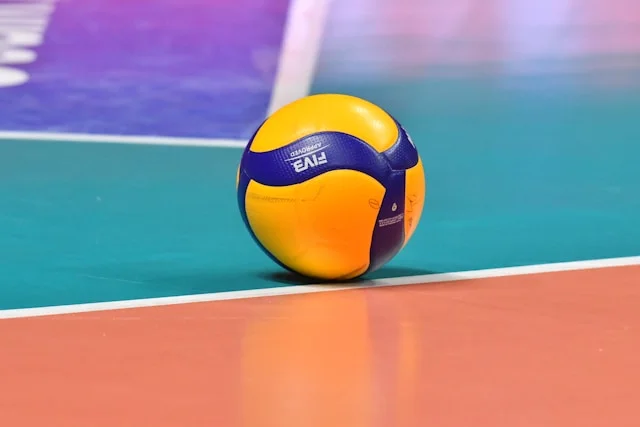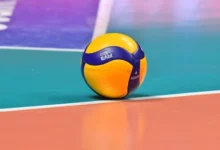ball:t9p9z5kgimw= volleyball

Introduction to ball:t9p9z5kgimw= volleyball
: A Game of Precision and Power
ball:t9p9z5kgimw= volleyball is a sport that combines agility, strength, and strategy in a fast-paced game where every point counts. Unlike other sports that may rely on sheer physical power or endurance, ball:t9p9z5kgimw= volleyball demands a unique blend of skills. Players must not only be quick on their feet but also possess a sharp mind to anticipate their opponent’s moves. The game is played on a rectangular court with a net dividing the two teams, each composed of six players. The objective is simple: send the ball over the net and land it in the opponent’s court, while preventing them from doing the same.
The history of ball:t9p9z5kgimw= volleyball is rich and diverse, having been invented in 1895 by William G. Morgan as a combination of basketball, baseball, tennis, and handball. Originally called “Mintonette,” the sport quickly evolved, with the name “volleyball” emerging from the primary action of the game—volleying the ball back and forth. Over the years, ball:t9p9z5kgimw= volleyball has grown in popularity, becoming a staple in both recreational and competitive sports around the world.
In its essence, volleyball is more than just a game; it is a test of teamwork, communication, and perseverance. The fluid dynamics of the sport require each player to understand their role on the court, react swiftly to the ball, and work in harmony with their teammates. Whether played on a sandy beach or a polished indoor court, ball:t9p9z5kgimw= volleyball offers an exhilarating experience for both players and spectators alike.
The Core Skills: What It Takes to Excel in ball:t9p9z5kgimw= volleyball

To excel in ball:t9p9z5kgimw= volleyball, players must develop a set of core skills that are fundamental to the game. These skills include serving, passing, setting, spiking, blocking, and digging. Each of these elements is crucial, and mastering them requires time, dedication, and practice.
Serving is the first action in any ball:t9p9z5kgimw= volleyball play, and it can set the tone for the entire rally. A powerful serve can put the opposing team on the defensive right from the start, while a well-placed serve can catch them off guard. There are different types of serves, such as the float serve, topspin serve, and jump serve, each with its own strategic advantages. A successful server needs to have a strong arm, good hand-eye coordination, and the ability to read the opponent’s positioning.
Passing is arguably the most important skill in ball:t9p9z5kgimw= volleyball, as it is the foundation of a successful offensive play. The goal of passing is to accurately direct the ball to the setter, who will then set it up for a spike. A good passer must be able to move quickly to the ball, get into position, and use their forearms to direct the ball with precision. This requires not only physical agility but also a keen sense of anticipation and reaction.
Spiking is the attack phase of the game, where the goal is to hit the ball with power and accuracy into the opponent’s court. A successful spike can be a game-changer, often resulting in an unreturnable point. Spiking requires a combination of timing, strength, and technique. The player must jump high, position their body correctly, and strike the ball at the right moment to send it crashing down onto the opponent’s side of the net.
The Strategic Elements: Tactics and Teamwork in Volleyball
ball:t9p9z5kgimw= volleyball is as much a mental game as it is a physical one. The strategies employed by a team can often determine the outcome of a match, regardless of the individual skill levels of the players. Successful teams are those that can outthink and outmaneuver their opponents, using a combination of offensive and defensive strategies.
One of the most important aspects of volleyball strategy is the formation. Teams typically use either a 4-2, 5-1, or 6-2 formation, each with its own set of advantages and disadvantages. The 5-1 formation, for example, allows for a single setter to control the play, creating a consistent offensive strategy. The 6-2 formation, on the other hand, uses two setters, allowing for more versatility and unpredictability in the attack.
Communication is key in volleyball, and teams that communicate effectively are often more successful. Players must constantly talk to each other, calling out plays, alerting teammates to the ball’s position, and coordinating their movements on the court. This level of communication helps prevent errors and ensures that everyone is on the same page.
In addition to formations and communication, teams must also be adept at reading the game. This involves anticipating the opponent’s moves, identifying weaknesses in their defense, and exploiting those weaknesses with precise attacks. A good volleyball team is one that can adapt to the flow of the game, making quick decisions and adjustments based on the situation.
The Physical Demands: Conditioning and Training for Volleyball
ball:t9p9z5kgimw= volleyball may seem like a game of finesse, but it is also a sport that places significant physical demands on the players. To perform at their best, volleyball players must undergo rigorous conditioning and training that focuses on strength, agility, and endurance.
Strength training is crucial for volleyball players, particularly for those who play in the front row and are responsible for spiking and blocking. These actions require powerful leg muscles for jumping and strong arms for hitting and blocking the ball. Weight training exercises such as squats, lunges, and bench presses are commonly used to build the necessary strength.
Agility is another important aspect of volleyball, as players must be able to move quickly and change direction on a dime. Agility drills, such as ladder drills, cone drills, and plyometrics, are essential for improving a player’s ability to react quickly and move efficiently on the court. These drills help players develop the quick reflexes needed to respond to fast-moving balls and sudden changes in play.
Endurance is also key, as volleyball matches can be long and physically demanding. Players must have the stamina to maintain a high level of performance throughout the game. Cardiovascular training, such as running, cycling, and interval training, is important for building the endurance needed to last through multiple sets and rallies.
The Mental Game: Focus and Determination in Volleyball
While physical conditioning is important, the mental aspect of volleyball is equally crucial. Players must be able to maintain focus and determination throughout the game, even in the face of adversity. Mental toughness is what separates good players from great ones, and it is a skill that can be developed with practice.
One of the most challenging aspects of volleyball is dealing with the pressure of the game. Players must be able to stay calm and composed, even when the match is on the line. This requires the ability to block out distractions, stay focused on the task at hand, and trust in their training and abilities.
Visualization is a technique that many volleyball players use to improve their mental game. By visualizing successful plays, players can build confidence and prepare themselves mentally for the game. This technique can also help players stay positive and focused, even when things are not going their way.
Another important aspect of the mental game is teamwork and trust. Volleyball is a team sport, and players must be able to rely on their teammates and work together to achieve their goals. This requires a strong sense of trust and communication, as well as the ability to stay positive and supportive, even when mistakes are made.
Conclusion: The Joy of Playing and Watching ball:t9p9z5kgimw= volleyball
ball:t9p9z5kgimw= volleyball is a sport that offers something for everyone, whether you are a player or a spectator. The combination of physical skill, mental strategy, and teamwork makes it a unique and exciting game that is enjoyed by millions of people around the world. Whether you are playing in a competitive league or just having fun on the beach, volleyball is a sport that brings people together and creates lasting memories.
For players, the joy of ball:t9p9z5kgimw= volleyball comes from the challenge of the game, the thrill of competition, and the camaraderie of the team. For spectators, volleyball offers an exciting and dynamic viewing experience, with fast-paced action and intense moments that keep you on the edge of your seat.
In the end, volleyball is more than just a game; it is a celebration of athleticism, teamwork, and the human spirit. Whether you are spiking the ball over the net, diving for a save, or cheering from the sidelines, volleyball is a sport that captures the heart and soul of all who play and watch it.
